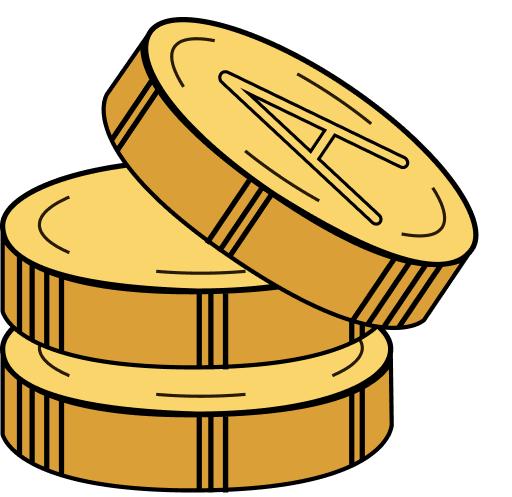DIA

Decentralized Information Asset (DIA) is creating an open-source, crowd-driven platform powered by blockchain technology that enables supplying, sharing and using digital financial asset and other financial data. DIA is designed for individuals and entities that rely on accurate financial market data in their decision making, or who seek to gain a trading advantage from accurate digital financial assets data. This includes individual traders, financial service businesses, family offices, funds, financial institutions, and specialized app developers. Incumbent financial information vendors offer proprietary products without transparency, and only little digital financial asset data. Existing information platforms do not provide externally validated or enhanced data and their centralized information feeds are not tracked intelligently to ensure authenticity.
The DIA approach to decentralized data
While traditional centralized solutions rely mostly on in-house data sourcing and validation, the DIA approach uses a combination of token incentives, crowd-sourced data validation as well as game-theory optimized flows to align the interests of users. These mechanisms are designed to induce commission of quality data, deter spamming and foster maintenance of critical data infrastructure without gaming the DIA system for personal benefit. Through a trustworthy, crowd-sourced and efficient digital financial assets market information ecosystem, DIA will enable multiple stakeholders to request, maintain and validate digital (and other) asset financial data resulting in more informed decisions. A shared market information ecosystem not only enables stakeholders to validate and use financial data, but also to build secure financial products without the need for auditing by third parties.
DIA provides a decentralized solution with five core capabilities:
1. Financial data collection: The DIA platform collects market data and publishes it through data feeds provided by third party services designed for use in dApps. Data providers can be individuals or entities who own, handle or produce data or know where it can be obtained (e.g. from different APIs), such as professional traders, data analysts, traditional data providers, official data suppliers (e.g. World Bank, ECB etc.).
2. Immutable data storage: The platform stores datasets off-chain in the DIA database, while storing the hashes on the Ethereum chain. The platform is secured through a hash, which will be embedded into the DIA token, thusly creating a secure link between the platform, data and the token itself. This means that whenever anyone modifies the financial information database, the modification will be tracked and immediately available for anyone using the code.
3. Crowd-based data validation: The DIA platform provides a monetary incentive to source and validate information requests. Therefore, and due to the open architecture, many different stakeholders will work on data validation – such as developers, reporters, crowd-auditors, interested stakeholders and data analysts.
4. Open-source access to data: Data can be accessed for a variety of applications through oracles/interfaces/APIs/tables by dApps, quant traders, (macro) hedge funds, brokerages, research analysts, risk managers, FX traders, economists, communication and consultancy agencies, digital asset investors, miners and exchanges and individuals.
5. Token utilisation: The DIA platform and token provides financial incentives for data verification and an ecosystem for digital assets that enables entities to use DIA tokens for enhancing security, data sourcing, validation as well as calculation.
Aligned interests for the open-source data platform
DIA’s model is to provide a hybrid on-chain/off-chain IT infrastructure and ecosystem with decentralized data validation and governance to enable accurate and validated data. This will ultimately improve data quality and transparency in the digital assets-, and open traditional financial markets. To acheve this outcomes DIA can be used in three ways:

Data provision: Acting on bounties posted or on non-monetary self-interest, data providers generate the basis of DIA’s database and quality.
- Raw Data and APIs: Data providers can upload data, stipulate terms of use and share it in whatever way they see fit, accessing the platform through an API. This can range from accessing public APIs legal to use or the supply of proprietary data sets via integration
- Algorithms: In addition to raw data and API connectors, data providers can provide algorithms using the existing off-chain API data as well as oracles to develop quantitative, open-source models on top of the existing DIA data.

Developers & Analysts: Data analysts are individuals or institutions that continuously improve the quality of our platform and critically review as well as verify new and existing datasets and algorithms.
- Data analysts offer a value-added service to the network by performing data cleansing, transformation, and normalization across multiple datasets.
- Curators can gain disputed bounties and stakes for spotting errors, bugs, manipulation attempts or security flaws in DIA’s off-chain database and on-chain connectors as well as improving and building the overall platform structure and security.

dApps: The use and application side of validated financial data on DIA.
- Based on the open-source model, every individual or entity can connect to the DIA financial database to use historical financial data for products and services with a 15-minute delay implemented
- While accessing historical financial data is free of charge, DIA tokens are charged for live pricing access to the DIA database or to specific oracles
- DIA has created a first MVP dApp on base of decentralized data which can be found under this link: https://coinhub.diadata.org














 Twitter
Twitter
 Telegram
Telegram
